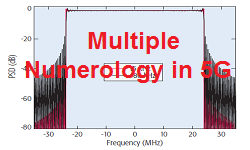5G Voice Services NAS and RRC Signaling Parameters
5G Voice Services
Voice Service support is always critical for any network. A user can initiate a Voice Call for normal conversation or for emergency support. In 5G there are multiple ways to support Voice Services and some are listed here.
- Voice over New Radio (VoNR)
- Voice call support via EPS Fallback with handover
- Voice call support via EPS Fallback with Redirection
VoNR is standard voice service when 5G RAN is capable to support Voice Call with help of 5G Core and IMS, where as Voice Call support via EPS Fallback with handover is required when UE is moving out of 5G coverage and to continue Voice Call 5G RAN handover the UE to 4G and when 5G RAN/5GC is not capable to support Voice service, it can fallback RAT to 4G as soon as UE request for Voice session.
It this post, we will discuss about NAS and RRC parameters which indicates the Voice Service support in 5G Network.
VONR NAS Parameters
NAS signaling exchange the information between the UE and the 5GC, RAN does not use it and transparently transfer the information. 5G System indicates the voice service support NAS during the registration procedure. This is required to provide higher granularity in feature support indication and in access restrictions.
UE sends it all network capability within Registration Request and IE UE’s Usage Setting’ indicates that the higher layers of the UE support the IMS Voice service and 5GS provides feature support information elements (IEs) which indicates support for certain features to the UE with Registration Accept message. The IEs structure related to voice services shown and listed below:

- MPSI: It indicates about supports of multimedia priority services (MPS)
- IWKN26: Its an indirect voice service related indicator specifying whether the network supports interworking without the N26 interface between EPC and 5GC. It has an effect on network selection and camping of the UE and how signaling message parameters should be set during call establishment.
- EMF: It indicates emergency voice fallback support
- EMC: It is an emergency support indicator
- IMS-VoPS-3GPP: It indicates support for voice over IMS services in the 5G network. Note that this also includes support for EPS or RAT fallback voice support, but not necessarily full VoNR support.
- IMS-VoPS-N3GPP: It indicates that the network supports voice over non-3GPP e.g. Voice over WiFi
- MCSI: It is an indicator bit for whether a UE can use access identity 2 representing mission critical services
VONR RRC Signaling Parameters
- System Information: 5G NR System Information Block 1 (SIB#1) includes parameter like emergency call support parameters ims-EmergencySupport, eCallOver-IMS-Support and UACBarringInformation. The support for emergency and cell barring information is indicated to the UE at the earliest possible moment. Since the network may offer emergency calling to UEs in a limited registration state, the SIB broadcast is the way forward to provide such information to the UE. Cell barring is needed at that stage to allow network congestion control.
- UE Capability Information: UE needs to indicate its capability to the network during the registration procedure, which further impacts the UE and network behavior concerning service and domain selection. In general, UE capability transfers represent a very complex aspect in 5G. UE capabilities relevant for voice includes following parameters.
- UE usage setting: This parameters as voice or data centric, the availability of IMS support and the UE operating in single- or dual-registration influence the behavior of the UE for domain selection.
- voiceOverNR: This indicates whether the UE supports IMS voice over NR. It is mandatory for an IMS voice capable UE in NR, and otherwise optional. This parameter represents a backward-compatible capability. VoNR support includes support for VoLTE as long the UE supports E-UTRA
- voiceOverEUTRA-5GC: It indicates whether the UE supports IMS voice over E-UTRA via 5GC. This support also includes IMS voice over E-UTRA connected to EPC, i.e. VoLTE.
- voiceOverSCG-BearerEUTRA-5GC: This indicates whether the UE supports IMS voice over SCG bearer of NE-DC. This is a future-oriented parameter. In the current release, IMS voice over split bearer is not supported neither with NR-DC nor NE-DC.
- voiceFallbackIndicationEPS: This indicates the support for EPS fallback. If this field is included, the UE should support IMS voice over NR and IMS voice over E-UTRA via EPC.
- RoHC Profile: VoNR support requires the UE PDCP capabilities to support RoHC profiles 0x0000, 0x0001 and 0x0002
to perform proper compression of PDCP SDUs containing voice packets.
- RRCConnection Request: While a UE establishing RRC connection it can signal the establishment casue and could be one of these emergency, high priority access, MPS or MCS priority access, MT and MO signaling, data transfer, SMS or voice.
- RRC Release: When 5G is not able to support voice call and it needs to fallback to EPS with redirection to 4G, it can send RRCRelease message including voiceFallbackIndication as the release cause.
Reference
- 3GPP TS 24.501 – 5G Non-Access-Stratum (NAS) protocol for 5G System (5GS)
- 3GPP TS 38.331 – 5G NR Radio Resource Control (RRC) Protocol specification
- White Paper from R&S
Related Posts
- 5G NR System Information Type 1 (NR-SIB1)
- 5G Standalone Mode Registration-Attach Call Flow
- Voice over NR Call Flow
- VoNR with Robust Header Compression (ROHC)
- 5G NR Cell Access Control
- 5G Service Based Architecture



